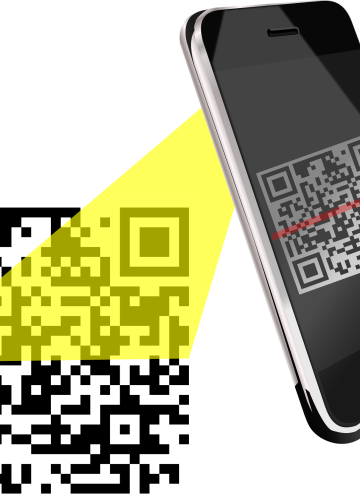
Magnetic Resonance Imaging (MRI) is a revolutionary diagnostic tool used in modern medicine. It provides detailed images of internal body structures without the use of harmful radiation, making it an essential tool for diagnosing various diseases. This article explores the types of diseases that MRI scans can detect, the types of MRI machines like 1.5T and 3T, and the associated costs.
What is an MRI Scan?
MRI, or Magnetic Resonance Imaging, uses strong magnetic fields and radio waves to produce detailed images of organs, tissues, and bones. Unlike X-rays or CT scans, MRI does not expose patients to ionizing radiation, making it safer for repeated use in monitoring chronic conditions or evaluating the effectiveness of treatments.
Diseases Diagnosed with MRI Scans
MRI scans are highly versatile and can detect a wide range of conditions across various parts of the body. Some of the common diseases and conditions diagnosed include:
- Neurological Disorders:
MRI is frequently used to diagnose brain and spinal cord conditions, including multiple sclerosis, brain tumors, strokes, and herniated discs. - Musculoskeletal Conditions:
It is instrumental in detecting injuries, ligament tears, bone infections, and joint abnormalities. - Cardiovascular Issues:
MRI scans help evaluate the heart and blood vessels, diagnosing conditions like congenital heart disease, blockages, or aneurysms. - Cancer Detection:
MRIs are invaluable for detecting and staging cancers in various organs, including the brain, liver, and breasts. - Abdominal and Pelvic Diseases:
It is commonly used to examine abdominal organs and the pelvis, diagnosing issues like liver disease, uterine fibroids, or prostate abnormalities. - Pediatric Conditions:
In children, MRI is often used to diagnose developmental anomalies or congenital issues.
Types of MRI Machines: 1.5T vs. 3T

The quality and detail of MRI scans depend on the type of machine used. The “T” in 1.5T and 3T stands for Tesla, which measures the strength of the magnetic field.
- 1.5T MRI Machines:
These are the standard machines widely used in hospitals and diagnostic centers. They provide excellent image quality for most diagnostic purposes, including brain scans, joint imaging, and routine abdominal exams. They are ideal for patients with metal implants as the lower magnetic field reduces artifacts. - 3T MRI Machines:
These machines offer a stronger magnetic field, resulting in higher-resolution images. They are especially beneficial for complex cases requiring detailed imaging, such as neurological studies, vascular imaging, or small joint evaluations. However, they may not be suitable for patients with certain metal implants due to the higher magnetic field strength.
Differences Between 1.5T and 3T Machines
| Feature | 1.5T MRI | 3T MRI |
| Magnetic Field Strength | Moderate | High |
| Image Quality | Good | Excellent (more detail) |
| Scan Time | Longer | Faster |
| Cost | More Affordable | More Expensive |
| Use Cases | Routine Diagnostics | Complex/High-Detail Imaging |
Cost of MRI Scans

The cost of an MRI scan varies depending on several factors, including the type of MRI machine, the body part being scanned, and whether the scan is done privately or through a public healthcare system.
- Standard 1.5T MRI Costs:
- Typically ranges from £250 to £600 for standard scans.
- Lower cost compared to 3T machines.
- High-Resolution 3T MRI Costs:
- Can range from £500 to £1,200 due to the advanced technology and higher image quality.
- Body Part-Specific Costs:
- Brain or spinal scans: £350–£800
- Joint scans (e.g., knee, shoulder): £300–£700
- Full-body scans: £1,500–£2,000
- Additional Factors Influencing Costs:
- Location: Costs in major cities like London or Manchester tend to be higher.
- Private vs. Public: NHS scans are usually free but may have long wait times. Private clinics offer faster service but at a premium.
Factors to Consider When Choosing an MRI Scan
- Purpose of the Scan:
For routine diagnostic purposes, a 1.5T MRI is often sufficient. If you need more detail, such as for brain imaging or tumor staging, a 3T MRI may be recommended. - Cost vs. Quality:
While 3T scans provide better image clarity, they come at a higher cost. Discuss with your doctor if the added detail is necessary for your condition. - Availability:
Not all diagnostic centers have 3T machines. Ensure the center you choose offers the type of MRI suited for your needs. - Preparation and Safety:
Inform the technician if you have implants, pacemakers, or metal fragments, as these could affect the scan or pose safety risks.
Conclusion
MRI scans are a cornerstone of modern diagnostics, offering detailed insights into a wide array of diseases. Understanding the differences between 1.5T and 3T machines can help you make an informed decision about the type of scan you need. While costs vary, discussing your options with your healthcare provider ensures you receive the most appropriate care for your condition.
Whether you're considering an MRI for routine diagnostics or specialized imaging, the advancements in MRI technology continue to make these scans more accessible and efficient for patients worldwide.























